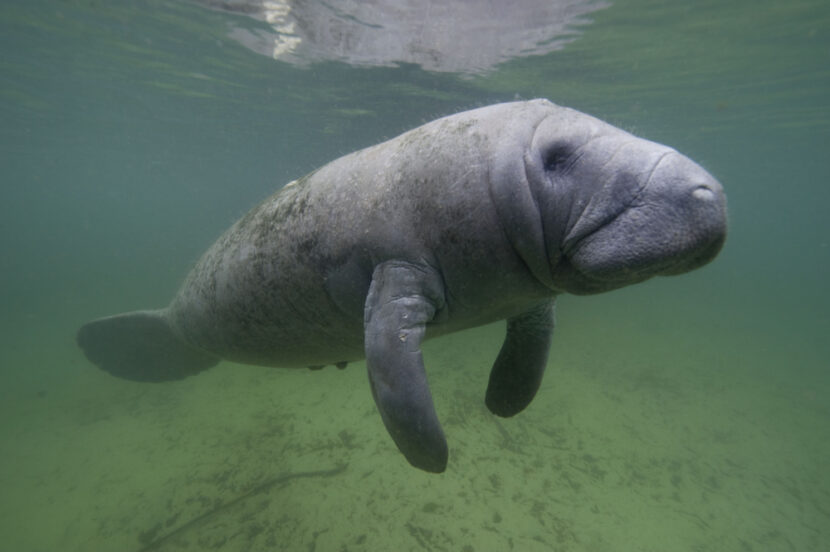NEW ORLEANS – As manatees recover in Florida, their U.S. home base, more and more seem to be showing up farther west along the Gulf of Mexico.
A total of seven stranded manatees had been reported along the Alabama coast before 2007, when a network to report strandings and sightings was created. Since then, “we’ve responded to dozens” of strandings, said Ruth Carmichael, head of the Dauphin Island Sea Lab’s Manatee Sighting Network for Alabama and Mississippi.
“I think things are changing, in the manatee population and in the environment,” she said Tuesday. She said scientists know there are more of the big, gentle marine mammals than there used to be. “But habitat is stable or declining. Animals are being forced to do something. The natural thing would be to spread out.”
In hope of gathering enough data to learn whether her impression is accurate, she’s now working with people in Louisiana and Texas to expand the network – “as far as I know, the only manatee sighting network in the country” – to those states.
“We see more animals coming here, staying longer, going farther west. We want to be prepared,” Carmichael said.
Louisiana has averaged seven manatee sightings a year in the past 20 years, up from about one a year over the previous two decades, according to the Department of Wildlife and Fisheries’ Natural Heritage Program, which has about 80 signs in areas where they’ve been seen, asking people to report sightings.
Texas gets perhaps one sighting report a year, said Steve Lightfoot of the Texas Parks And Wildlife Department.
Work toward a four-state sighting network is preliminary so far but the project is important, said Suzanne Smith, marine mammal stranding co-ordinator at the Audubon Aquarium of the Americas in New Orleans and one of the people working with Carmichael.
“They are an endangered species. So we need to work together to protect and conserve them,” Smith said.
Manatees, also called sea cows, are vegetarians averaging about 10 feet long and about a ton in weight. Their greatest threats in the United States are habitat loss and boat propellers, which injure so many that biologists identify hundreds from their scars.
The population was estimated in the hundreds in 1967 but is now at least 4,800, the number counted in late January 2014 by the Florida Fish and Wildlife Conservation Commission. The commission won’t give total population estimates.
Florida manatees have recovered enough that the U.S. Fish and Wildlife Service is considering reclassifying them from endangered to threatened. The department expects to decide by midyear but has not set a publication date, spokesman Chuck Underwood said Thursday in an email.
Sightings have gone up much faster than strandings in Mississippi and Alabama, but it’s impossible to tell how much of that increase is just because more people are watching out for them and they know where to report, Carmichael said.
The 1,387 reported in Alabama from the start of 2007 through November 2014 are nearly 12 times the total ever reported in the state before 2007. In Mississippi, 25 had been reported through 2006 and 147 since then. The network also has received a total of 10 reports from Georgia, the Carolinas and Virginia.
The stranding increase is more reliable, Carmichael said: “When a one-thousand-pound animal strands, people notice.”
Her lab also has verified that Alabama and Mississippi are part of some manatees’ home ranges. “The same animals come back year after year,” she said.
Many stranded animals are young, she said. “That suggests some naivete – they’re less experienced, and don’t know when to leave” for Florida’s warm springs and power plant effluents, where the animals can stay warm in winter.
